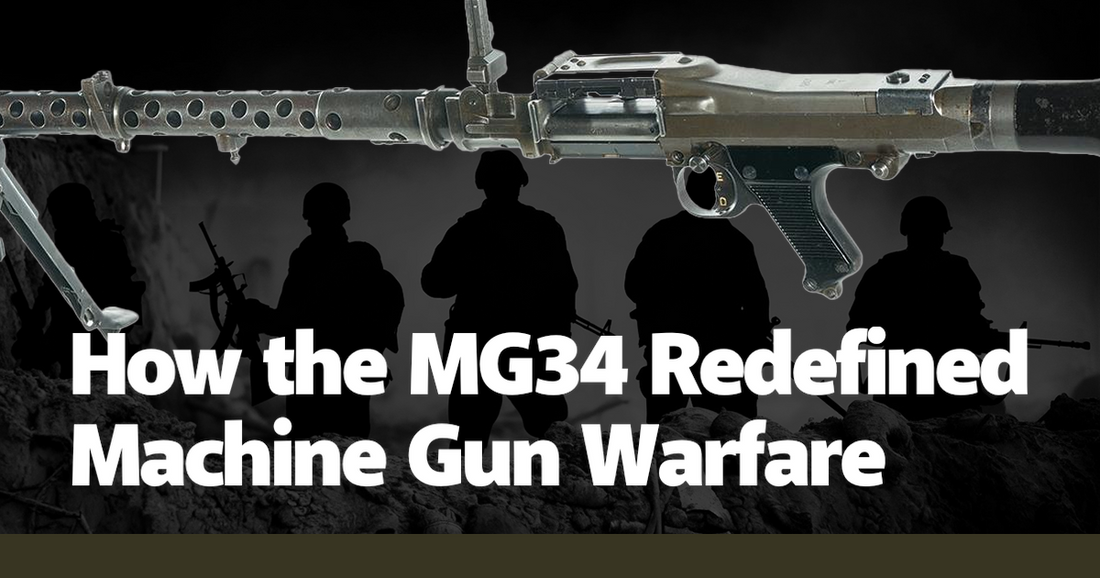In the annals of military history, few weapons have had as profound an impact on warfare as the MG34 machine gun. Introduced by Nazi Germany in the early 1930s, the MG34 was a revolutionary design that redefined the role of machine guns on the battlefield. It was a weapon that combined versatility, reliability, and firepower in a way that had never been seen before, setting a new standard for what a machine gun could achieve. Its influence was so significant that it not only shaped the tactics of World War II but also laid the groundwork for future generations of automatic weapons.
The MG34 was the brainchild of Heinrich Vollmer, a German engineer whose vision was to create a machine gun that could serve multiple roles. Prior to the MG34, machine guns were typically heavy, cumbersome, and limited in their applications. Vollmer's design broke the mold by offering a weapon that was both lightweight and capable of being used in a variety of scenarios. Whether mounted on a tripod for sustained fire, used as a light machine gun by infantry, or installed on vehicles and aircraft, the MG34 excelled in every role. This adaptability was a game-changer, allowing German forces to employ a single weapon system across different theaters of war.
One of the most remarkable features of the MG34 was its rate of fire. Capable of firing up to 1,200 rounds per minute, it was one of the fastest-firing machine guns of its time. This high rate of fire provided a significant advantage in combat, allowing German soldiers to lay down a withering hail of bullets that could suppress enemy movements and break through defensive positions. The psychological impact of facing such a weapon was immense, often leading to demoralization and retreat among opposing forces. Anecdotes from the front lines frequently describe the MG34's distinctive, rapid staccato as a harbinger of doom.
The MG34's reliability was another key factor in its effectiveness. Built with precision engineering, it was less prone to jamming and malfunctions compared to other machine guns of the era. This reliability was crucial in the heat of battle, where a jammed weapon could mean the difference between life and death. German soldiers quickly grew to trust the MG34, knowing that it would perform consistently even in the harshest conditions. Stories from veterans often highlight the weapon's dependability, with many recounting how the MG34 continued to function flawlessly despite exposure to mud, sand, and extreme temperatures.
Another aspect that set the MG34 apart was its innovative design features. It was one of the first machine guns to utilize a quick-change barrel system, allowing operators to replace an overheated barrel in a matter of seconds. This feature was particularly valuable during prolonged engagements, where continuous fire could quickly render a barrel red-hot and unusable. The ability to swap out barrels on the fly meant that the MG34 could maintain its high rate of fire without the risk of overheating, giving German forces a sustained firepower advantage.
The impact of the MG34 on military tactics was profound. Its versatility allowed for new strategies that leveraged its capabilities to the fullest. German doctrine began to emphasize the use of machine guns as the backbone of infantry units, with the MG34 providing covering fire while riflemen advanced. This approach, known as "fire and movement," became a hallmark of German infantry tactics and was instrumental in their early successes during the Blitzkrieg campaigns. The MG34's ability to be quickly repositioned and adapted to different combat scenarios made it an indispensable tool in the German arsenal.
Despite its many advantages, the MG34 was not without its drawbacks. Its complex design and precision engineering made it expensive and time-consuming to produce. As the war dragged on and resources became scarcer, the need for a more cost-effective solution led to the development of the MG42, which retained many of the MG34's best features while being simpler and cheaper to manufacture. Nevertheless, the MG34 continued to see extensive use throughout the war, a testament to its enduring effectiveness and the high regard in which it was held by those who wielded it.
In the broader context of military history, the MG34's legacy is undeniable. It set a new benchmark for what a machine gun could achieve, influencing subsequent designs and shaping the evolution of automatic weapons for decades to come. Modern machine guns, with their emphasis on versatility, reliability, and high rates of fire, owe a significant debt to the innovations pioneered by the MG34. As we look back on the weapon that redefined machine gun warfare, it's clear that the MG34 was more than just a tool of war; it was a technological marvel that changed the face of combat forever.

